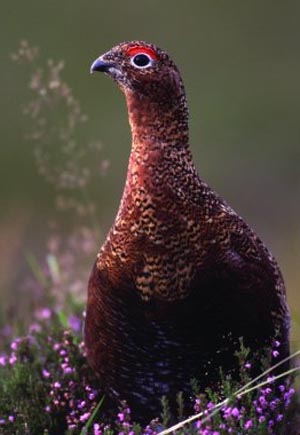 A shortage of red grouse on British moors is leading to plans for cancelling the 2006 shooting season this year, for the second year in a row. At present, it’s not clear what England’s landed gentry will do for their suppers.
A shortage of red grouse on British moors is leading to plans for cancelling the 2006 shooting season this year, for the second year in a row. At present, it’s not clear what England’s landed gentry will do for their suppers.
And what will they do for the rest of the day, for that matter? Grouse season, normally kicked off on the so-called Glorious Twelfth of August each year, provides a welcome diversion from the monotony of shooting clay pigeons, pheasants and partridges. Or blasting rabbits staked to the ground, waking the neighbors, getting bras off debutantes and jumping over matchbooks. (Oops, now I’m just being a twit.)
After a few good chuckles about dukes having to dip into their kipper stashes to get through the year, I got interested in the serious side of this story. Grouse hunting is indeed a sport of the privileged – think Dick Cheney types in tweed instead of cybernetic skin. Exclusive enough that the working class get their chance only by trading a day of grounds work for a day of hunting.
Grouse shooting is big business in the U.K., netting more than 17 million pounds on 350,000 bagged grouse in normal years. But 2004 saw a reduced hunt and in 2005, with numbers at their lowest in 50 years, no one hunted. The plan was that grouse numbers would skyrocket while the guns sat in their cases and gleamed, and everyone would be eating roast hen by 2006.
So why haven’t numbers come back? Much of the grouse decline has been attributed to a fascinating (or icky, you decide) worm called Trichostrongylus tenuis. It’s a gut parasite that spends much of its life eating, er, the teeming denizens of the grouse-poop ecosystem. When a strapping young T. tenuis is ready to see the world, it crawls up the dew-covered heather and enjoys the view from the farthest-out, tenderest sprigs. Where it’s promptly eaten by a red grouse. In the grouse’s gut, which is sort of like a nightclub without the fancy lights, the worm sexes mix freely and … pretty you’ve got even more tenuis larvae ensconced in the poop-covered moors.
Gameskeepers have been battling strongylosis for more than 100 years. The British Game Conservancy Trust even has a position paper on strongylosis control (thanks to them for the red grouse image by the way). Apparently, a couple of mild winters in a row coupled with cold, wet Junes have allowed the strongylosis situation to run out of hand. And the weird weather has also led to more ticks on the runabout, and late snowfalls freezing out little grouse chicks in the high elevations.
But wait a tick! By Jove, I’ve heard this sort of thing elsewhere. Strange weather patterns repeating themselves. Mild conditions prompting insect populations to increase through the winter. Not enough to convince a jury, perhaps. But call it a hunch, I’d say there’s more to this case than a few bored earls with nothing to shoot at. We’re on the trail now Watson, and warming to the case.




ha. good food.
good food for T. tenuis!
Grouse numbers are down, because of bad management, if anti worm grit is placed,, plus predators control is done by keepers,and proper muirburning is effected , then your grouse numbers will increase !! So simple !
I should have known that you could make feces interesting. Thanks.
Great beat ! I wish to apprentice even as
you amend your web site, how can i subscribe for a blog site?
The account helped me a appropriate deal. I were tiny bit acquainted
of this your broadcast offered vivid clear idea